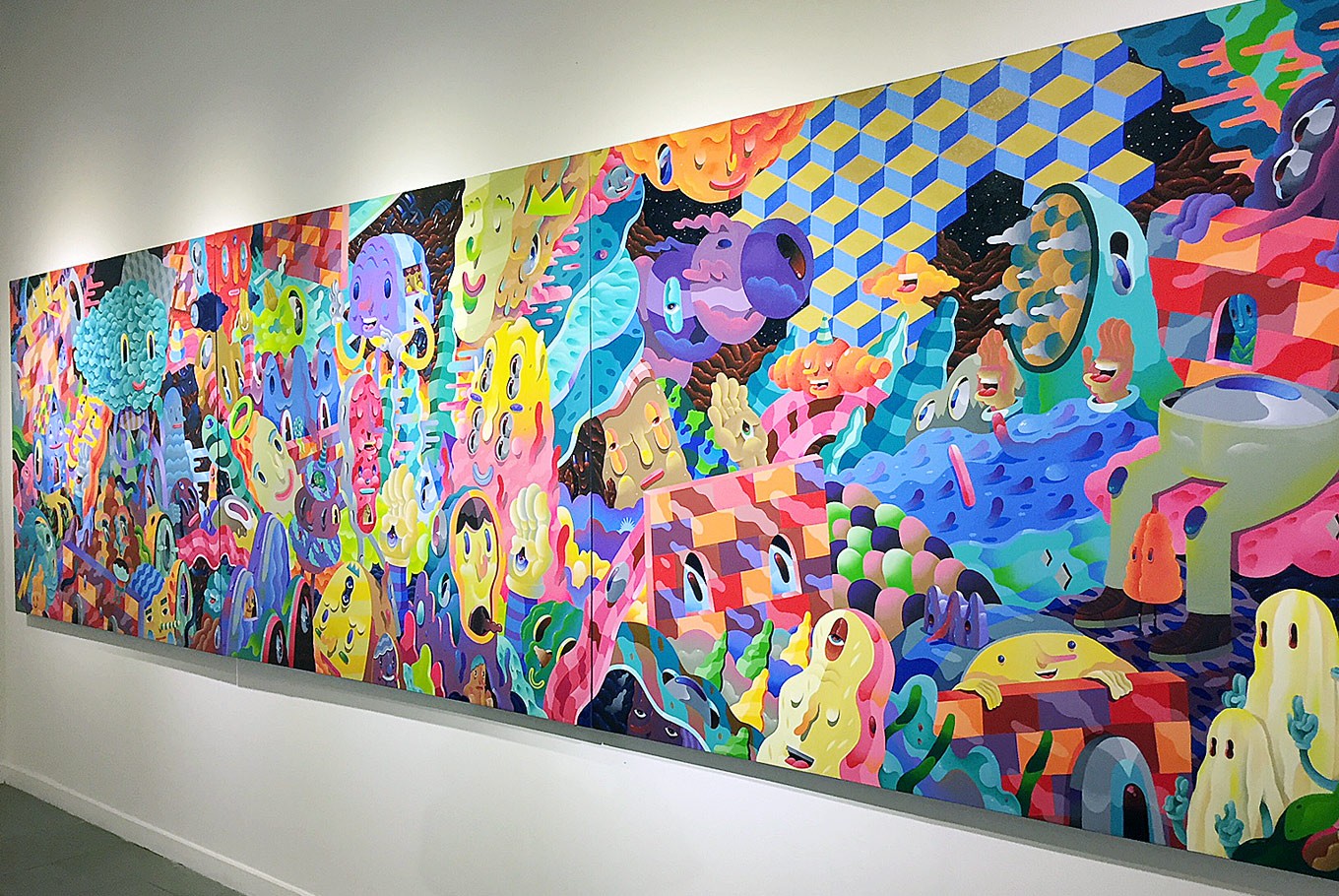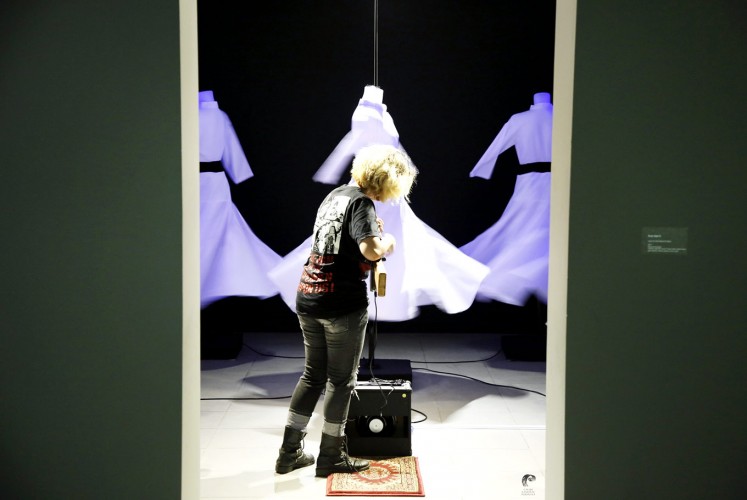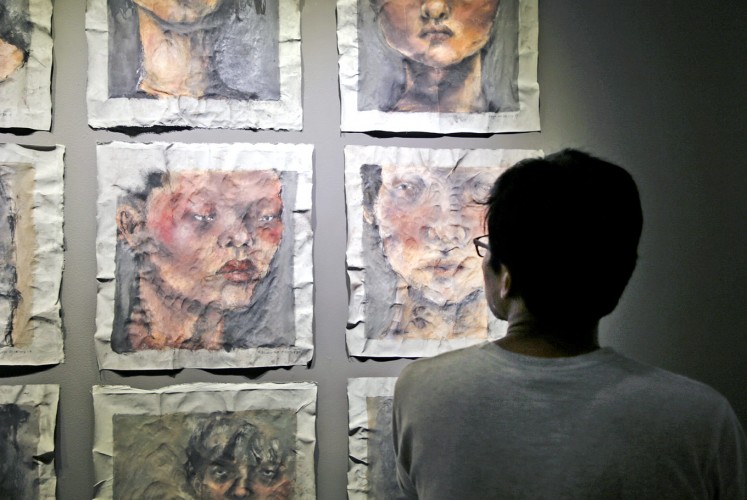Popular Reads
Top Results
Can't find what you're looking for?
View all search resultsPopular Reads
Top Results
Can't find what you're looking for?
View all search resultsManifesto 6.0: Nostalgia for progress
“Manifesto 6.0: Multipolar — Fine Arts 20 Years After Reform” aims to serve as a reflection of Indonesian fine arts development after the fall of Soeharto’s regime.
Change text size
Gift Premium Articles
to Anyone
L
ong running art exhibition series Manifesto returns for its sixth year at the National Gallery of Indonesia in Gambir, Central Jakarta, showcasing a curated lineup of mostly young artists to fill up the relatively retrospective theme.
This year’s exhibition, which runs until May 17, is titled “Manifesto 6.0: Multipolar — Fine Arts 20 Years After Reform”, and aims to serve as a reflection of Indonesian fine arts development after the fall of Soeharto’s regime, which according to curators, embraces new forms of art not seen or appreciated before that era.
Throughout its history, Manifesto, which has been held since 2008, has addressed social issues such as racial conflict, the abuse of authority and the flow of life in Indonesia.
Manifesto 6.0 specifically highlights the work of 61 post-1998 artists in the fields of painting, sculpture, installation, graphic design, ceramics, video art, murals and photography and is done so purposefully to emphasize young interpretations, as some of these forms are welcomed as new methods.
The artworks that are displayed in this year’s exhibition stays well within the themes that have been addressed in the past.
Most center on the perils of social authority, diversity and addressing past events that have brought shame onto the Indonesian ideal of diversity and togetherness; from commentaries of the recently rising fundamentalist Islam attitudes to the traumatic effects of atrocities committed by the state against activists in the Soeharto dictatorship to people who they easily brand as enemies.
On the surface, most of these works are able to pique interest and impress. Social commentaries of this kind are found in almost every fine arts exhibition of this caliber and the ideas can risk being uninteresting if a work doesn’t really stand out.
However, Manifesto 6.0 merely introduces various interpretations, which in itself is valid.
The artists range diversely from several corners of Indonesia, which according to culture and arts commentator Adi Wicaksono, shows how far the arts scene has come forward in embracing the country’s creative diversity in the past 10 years.
“One thing that I observed about the fine arts scene here is that a lot of the mediums that were previously not considered art enough for galleries are now being shown,” Adi said during a discussion at the National Gallery.
Admiration: A visitor admires an abstract painting of significant depth. (Indonesia National Gallery/File)“Back then, mediums as street art wouldn’t be found in galleries and would therefore be not considered high art. Today, street art is considered an art form that is well respected and appreciated.”
Despite the advent of technology and smartphones bringing people together in a faster pace, Adi feels there still seem to be arguments among the artistic elite regarding the “realness” of an experience; an argument of which should be reconsidered on a wider scope.
But even with these kinds of discussions happening in the internal scenes, Manifesto 6.0 portrays itself as a display of the smallest of changes to how far Indonesia’s fine arts have come.
It is an idea that National Gallery president director Pustanto hopes will stick in the minds of the younger generation of artists.
“I hope this throwback exhibition can become both a commemoration of Indonesian arts and an inspiration or motivation for local artists to keep creating and innovating their techniques, embracing new forms as they go,” the director says.













